1961 and all that - Hornby King Edward VIII
It is 1961 and here is a view of 6029 King Edward VIII with some chocolate and cream carriages behind it. This is the arrival of Hornby’s new King Class engine. The purchase was an ‘on the spur of a moment’ decision – well worth it I feel.
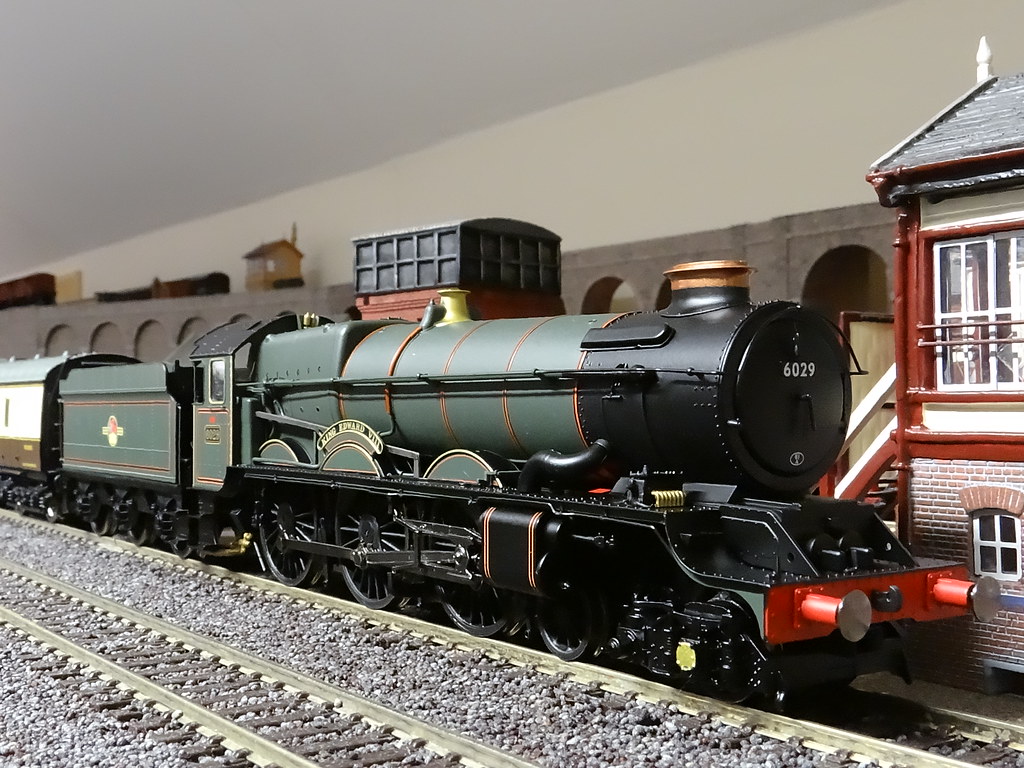
Hornby 6029 King Edward VIII
Why 1961? Well the Great Western Archive has 6029 allocated to Plymouth Laira in March 1959 (as shown in my Ian Allen book for 1959). Also it has its last shed as Old Oak Common which agrees nicely with my Ian Allen book for Spring 1961 and Hornby’s shed code plate on the model.
I cannot vouch for the accuracy of the new model but the finish seems to me to compare very favourably with the latest Hornby Castles. Rumour has it that the spokes on the driving wheels are not quite the right shape but I have to say that this is not apparent when looking down at the engine running on the layout! My model runs quietly, smoothly and straight, and will handle seven coaches up and down and roundabout the layout. This is just the same as Hornby’s Britannia and I might be hard pressed to decide which of the two models I prefer.

It is 1958 (see Footnote) and 70015 Apollo is just about to leave God's Wonderful Railway for Trafford Park (9E)
6029 King Edward will replace my earlier Hornby model of King William. King William was DC ready and to my untrained eye, quite well detailed. A comparison of the old and new models is quite instructive.
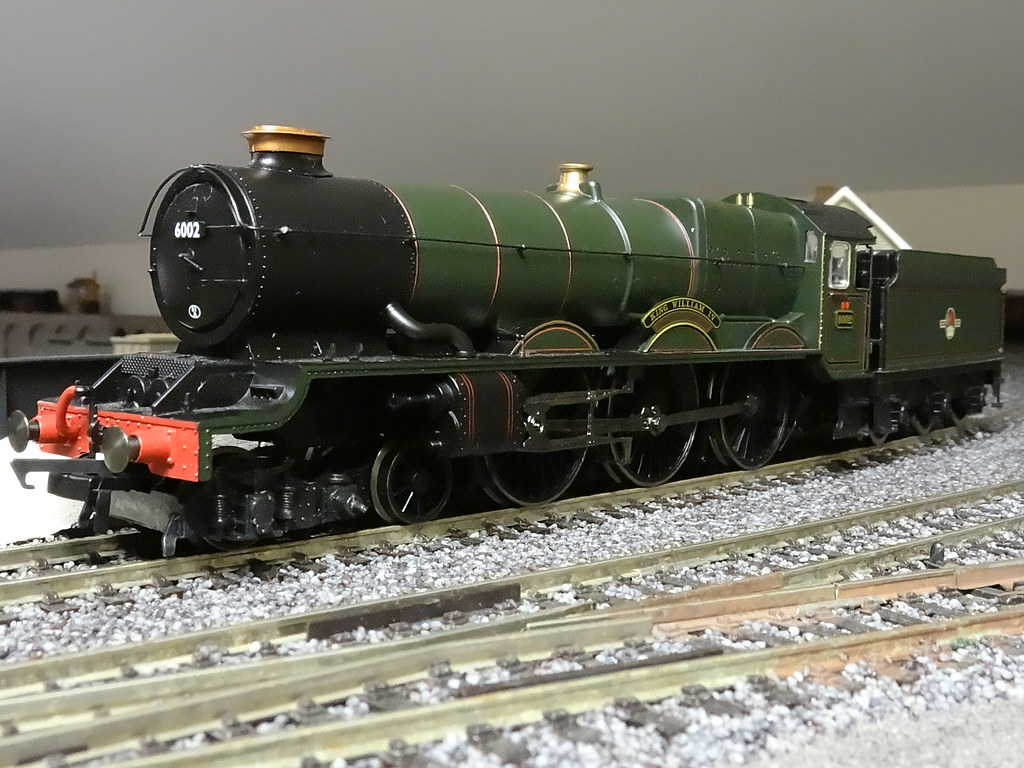
6002 King William IV, Hornby R2234
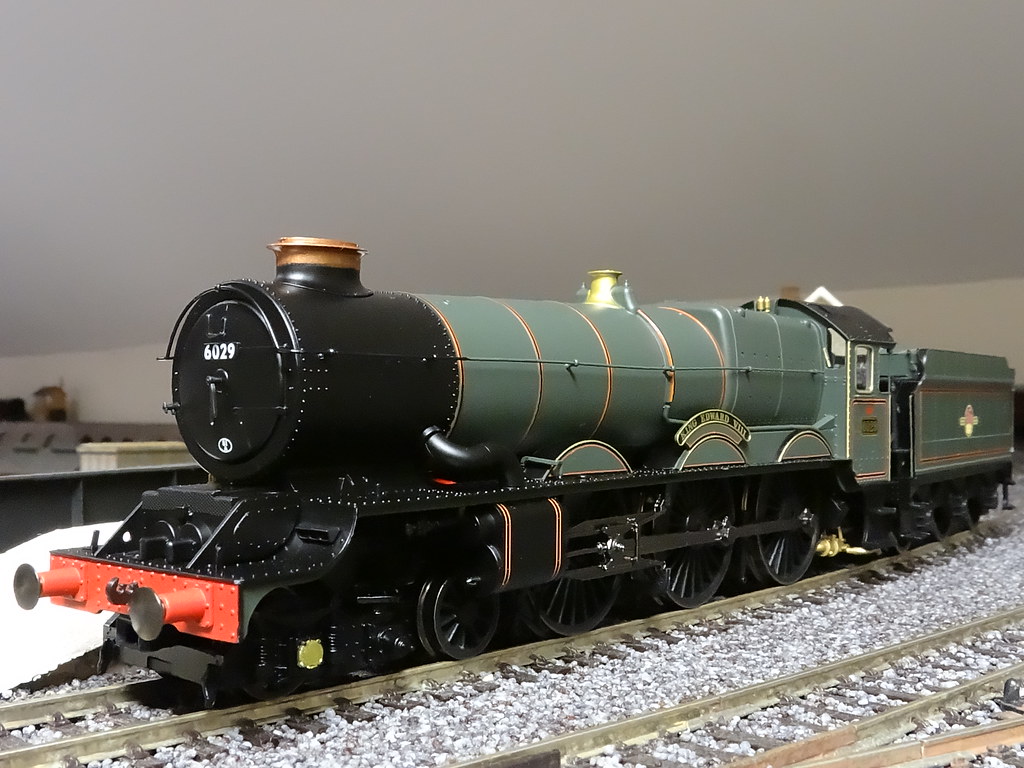
6029 King Edward VIII, Hornby R3332
Aside from the different shade of green there are other significant differences.
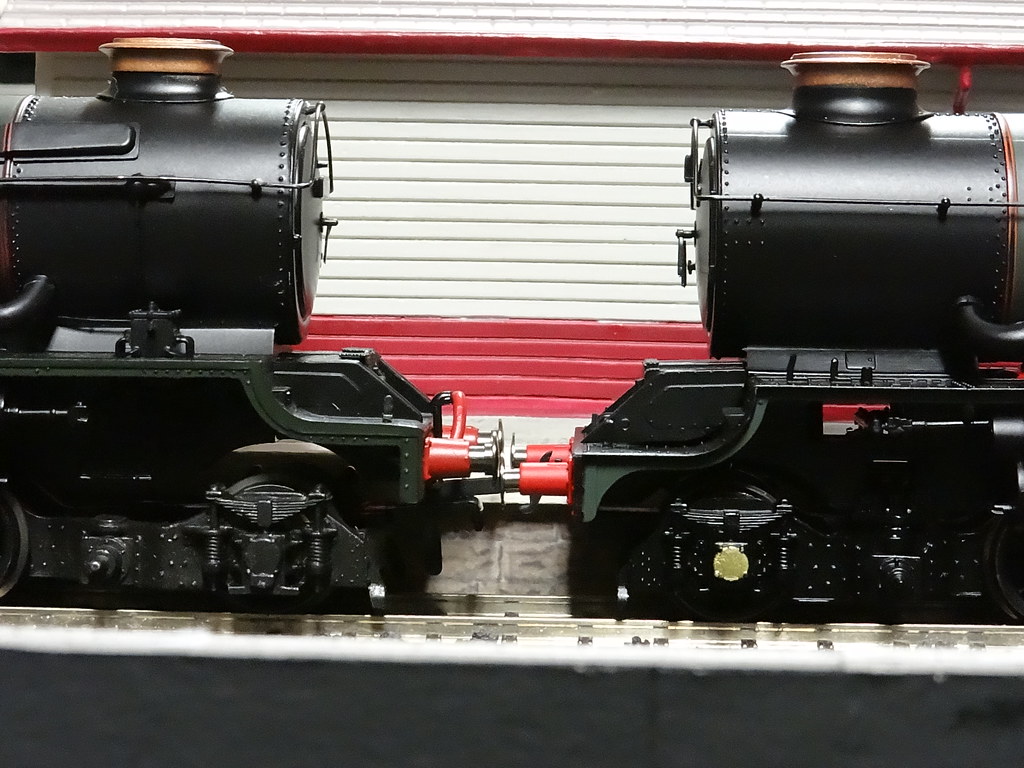
Head to head, King William left King Edward right
I always thought there was too much space between the bogie and the footplate on William and the view above shows clearly how the body shell of the old model had been raised (as were a lot of Hornby models). I am guessing that this was done to allow the buffers to clear the couplings.
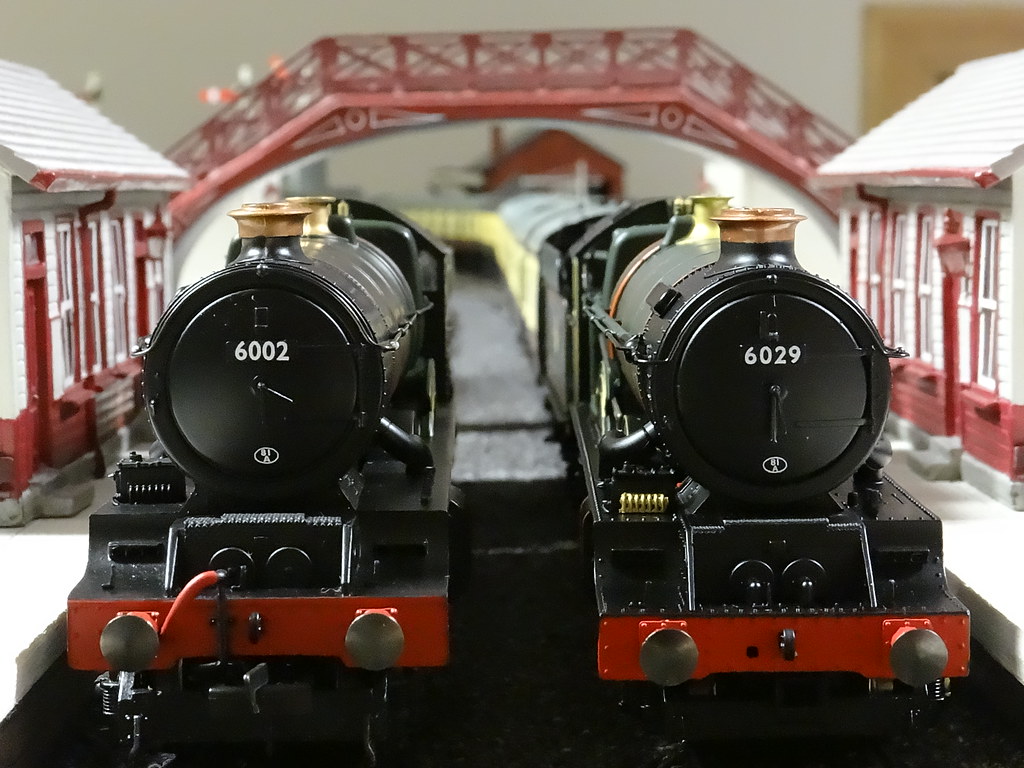
Side by side, King William left King Edward right
The view above showing the models side by side again shows William to be' raised up'.
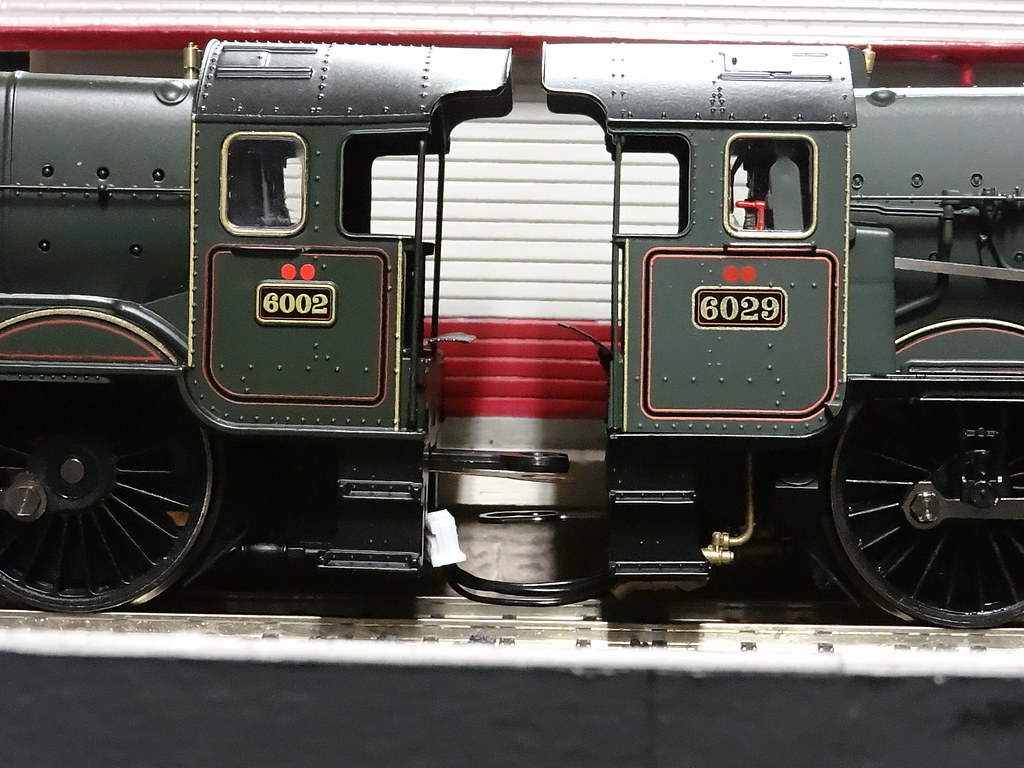
Cab to cab, King William left King Edward right
Surprisingly at the cab end Edward is now the higher. I think William’s cab looks tiny and out of proportion as if it had been shrunk to fit.
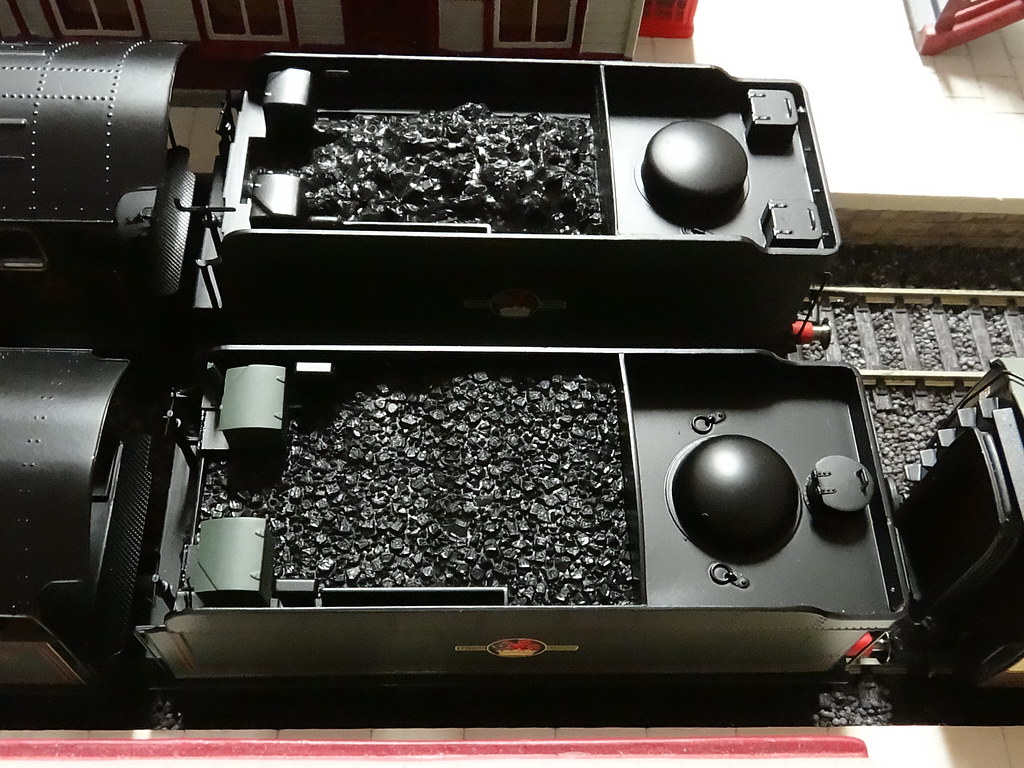
Tender tops, King William top King Edward bottom
I know even less about tenders than I do about engines, but William’s tender from the top looks to me to be a completely different beast to the one fitted to Edward.
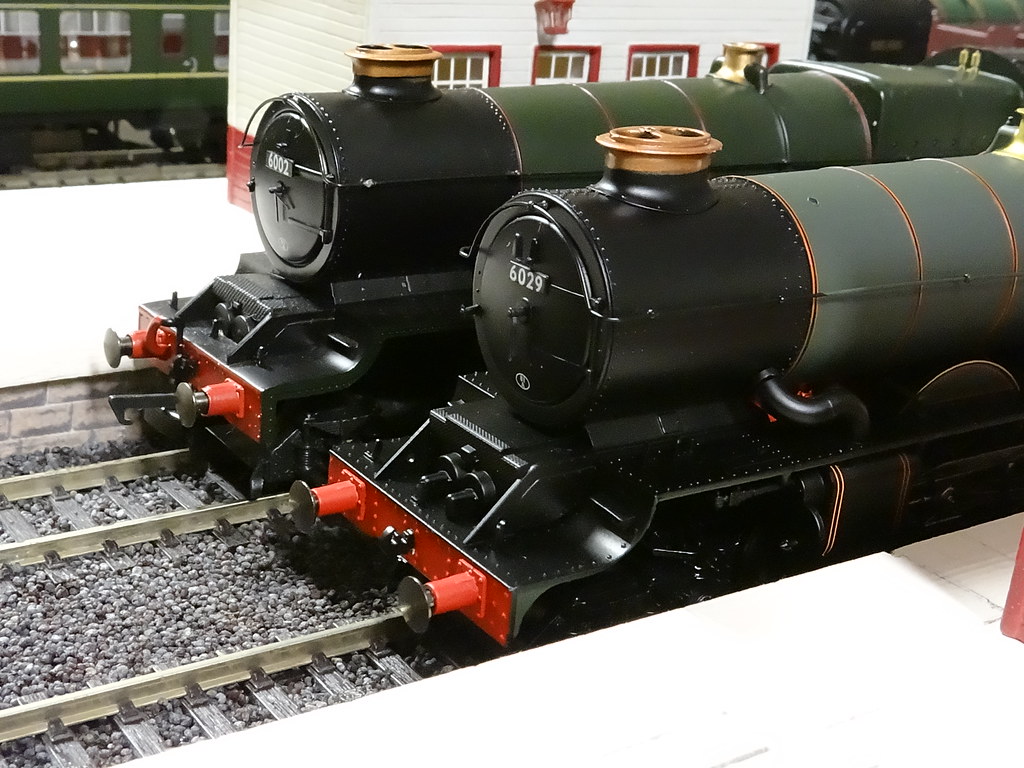
King William top left King Edward bottom right
Perhaps when viewed from a greater distance the differences are less obvious? However what about the ‘wonky’ steps on Edward?
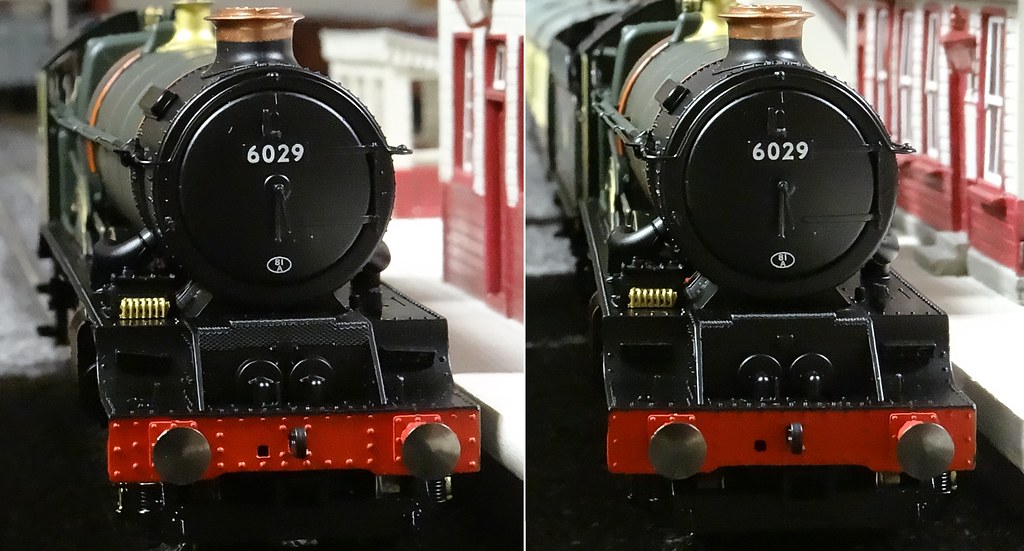
Before and after fettling the front footplate steps
I am very pleased with King Edward and despite what follows I feel that Hornby have come up with a very good model.
It might seem that Hornby still have some Quality Control issues. Out of the box, both front footplate steps on Edward were loose and set at a jaunty angle. I was surprised to find that these steps were a separate detail with their own tiny spigots and matching holes on the footplate to fit. Well done those ladies in China – it took me five minute or more to get one set of steps back in place.

Oh dear!
My model had only been out of the box a few minutes before it shed a crank pin. There is supposed to be a spacer between the connecting rod and the coupling rods but this had escaped, never to be seen again. Not to worry I had a bag of Hornby spacers and would fit something suitable.

Hornby Spacers
Up until Edward, Hornby coupling rods seem to me to have come with either a big spacer or a little spacer. I have shown these two sorts of spacer in the picture above at the right hand side of the wooden block. The spacers on Edward are smaller again. I tried fitting my smallest spacer but I felt the motion was too tight. I would file down one of the small spacers. How to hold the spacer whilst working on the kitchen table? I used a small G clamp to press the spacer into a block of softwood and this held it sufficiently to allow it to be filed to size.

Hornby New King Tender Wheels
The tender with my model felt very light and had a noticeable wobble. It seems that Hornby have removed some of the metal ballast weight to hold a speaker and that this has reduced the tender weight from around 72 gm down to 57 gm. Comparing wheel sets from recent models shows that the tender wheels that came with Edward are a slimmer profile. It is just a pity that they didn’t run true. I had to double check the tyres on the engine but these were still all regular Hornby profiles.
Well – I had better start saving as there are more options due in 2016.
Footnote
According to David Hey Apollo was allocated to Cardiff Canton (86C) late 1956 and only stayed 18 months before being transferred to Trafford Park (9E). Interestingly David indicates that Apollo only received its BR (WR) smoke deflectors in 1958 some six months before transfer to the BR (LMR) Region. It was during the 1958 works visit that the tender received a late crest, but it would be 1960 and a visit to Crewe works before a speedometer was fitted.
Addendum

Hornby Apollo with its Xmas Present - a set of ModelMaster etched plates
-
 2
2


.thumb.jpg.60c53fcbcaa34017b05b8919d1a9e6d2.jpg)

9 Comments
Recommended Comments
Create an account or sign in to comment
You need to be a member in order to leave a comment
Create an account
Sign up for a new account in our community. It's easy!
Register a new accountSign in
Already have an account? Sign in here.
Sign In Now